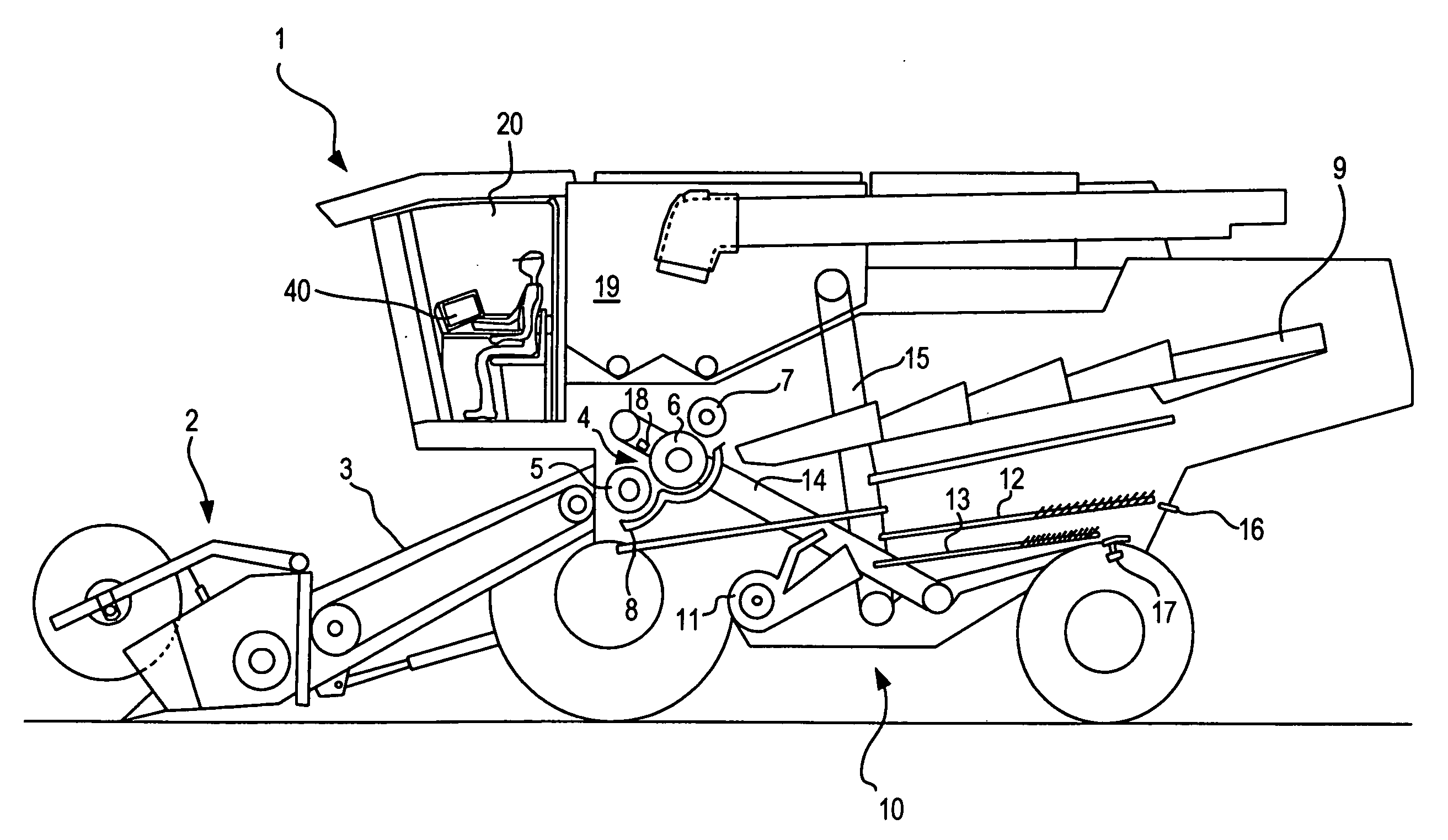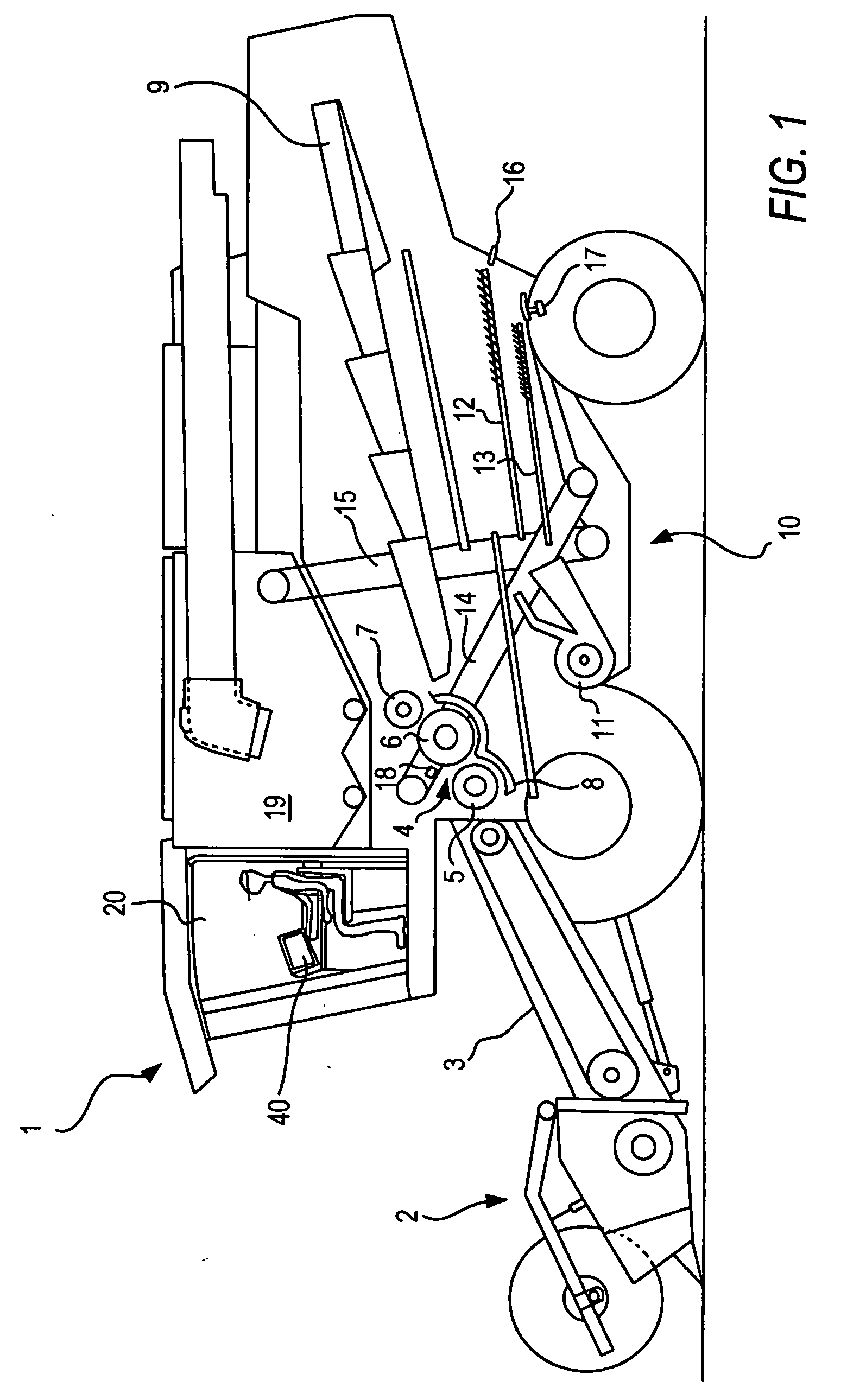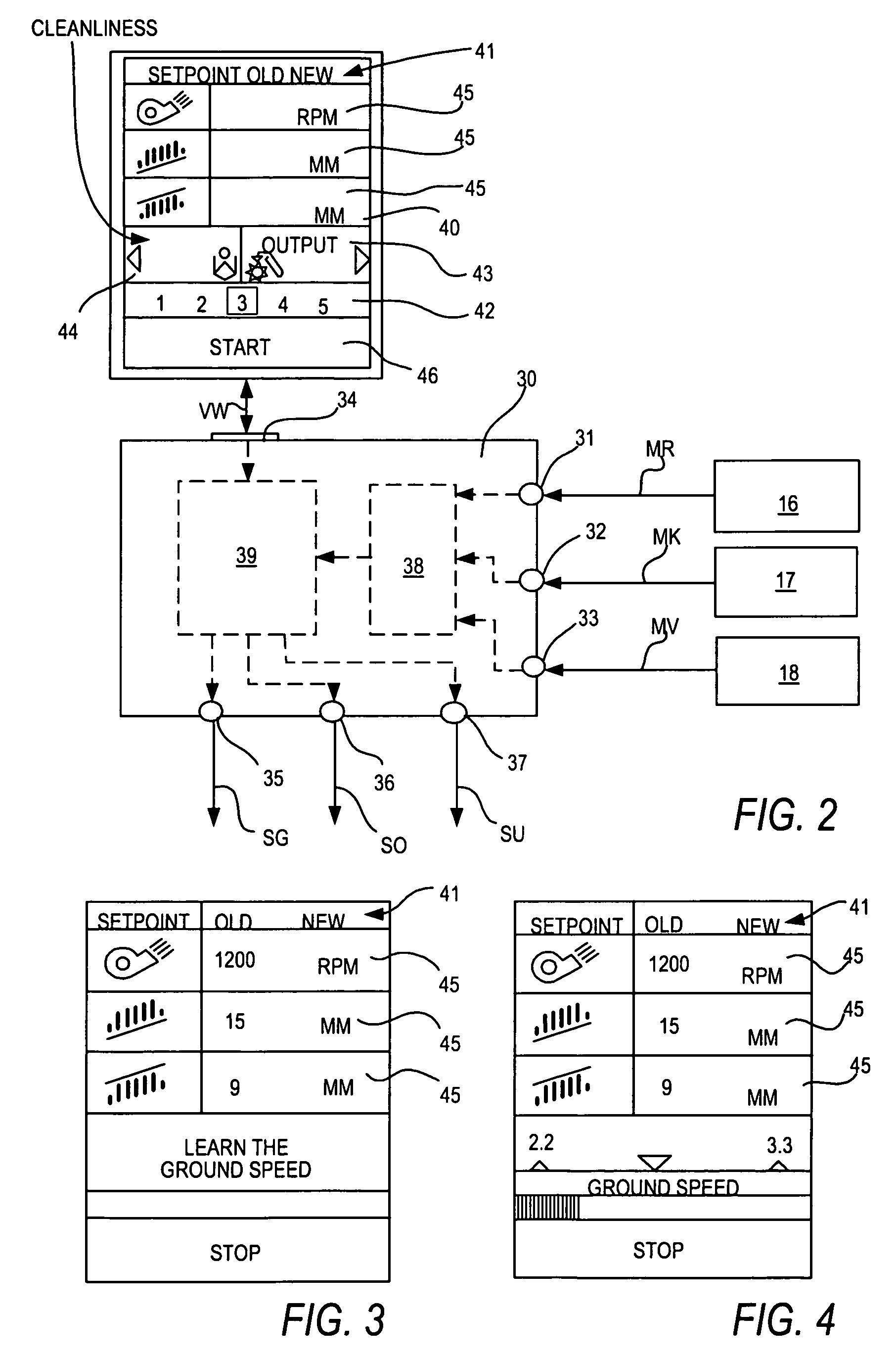Method for computing a target setting value
a target setting and target value technology, applied in the field of target setting value computing, can solve the problems of not being able to adapt the harvesting machine and/or its working unit to the current harvesting process, still relatively difficult for operators to adjust the machine, and inexperienced and/or untrained operators, etc., to achieve reliable, simple and automatic selection of target setting value, and optimize the control of the working unit
- Summary
- Abstract
- Description
- Claims
- Application Information
AI Technical Summary
Benefits of technology
Problems solved by technology
Method used
Image
Examples
Embodiment Construction
[0054] The exemplary embodiment of the present invention shown in FIG. 1 is a self-propelled combine harvester 1 with a tangential or cross-flow threshing mechanism 4 and a plurality of shakers 9 located behind it, as the separating unit. The separating unit is composed of a plurality of tray-type shakers 9 with a plurality of shaking speeds. A cleaning unit 10 is located beneath shaker 9, which is composed of a plurality of sieves 13 located one on top of the other, and a blower 11.
[0055] The mode of operation of a combine harvester 1 of this type is as follows:
[0056] Using a reel of the cutting disc, the crop material is placed on mowing unit 2 and is cut using knives. The crop material is then conveyed via a header auger and a feed rake in a feeder housing 3 to the inlet of threshing mechanism 4.
[0057] A feed and / or pre-acceleration cylinder 5 is located at the inlet of threshing mechanism 4. Located behind threshing mechanism 4, in the direction of crop flow, is a cylinder 6 ...
PUM
 Login to View More
Login to View More Abstract
Description
Claims
Application Information
 Login to View More
Login to View More - R&D
- Intellectual Property
- Life Sciences
- Materials
- Tech Scout
- Unparalleled Data Quality
- Higher Quality Content
- 60% Fewer Hallucinations
Browse by: Latest US Patents, China's latest patents, Technical Efficacy Thesaurus, Application Domain, Technology Topic, Popular Technical Reports.
© 2025 PatSnap. All rights reserved.Legal|Privacy policy|Modern Slavery Act Transparency Statement|Sitemap|About US| Contact US: help@patsnap.com



